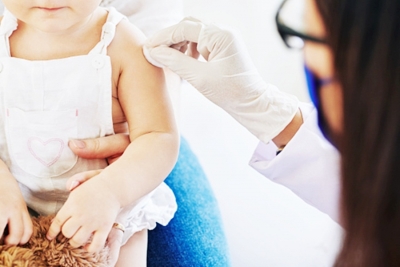Mission Indradhanush improved child vaccination rates in India
By IANS | Published: July 18, 2021 01:36 PM2021-07-18T13:36:03+5:302021-07-18T13:50:08+5:30
New Delhi, July 18 An estimated 25.5 million children across India were vaccinated under India's Mission Indradhanush (MI) ...

Mission Indradhanush improved child vaccination rates in India
New Delhi, July 18 An estimated 25.5 million children across India were vaccinated under India's Mission Indradhanush (MI) child vaccination campaign during March 2015-July 2017, according to a study.
In December 2014, the Government of India launched MI, with the objective of increasing full immunisation coverage.
MI was a periodic intensification of the routine immunisation (PIRI) programme, which targeted unvaccinated and under-vaccinated children by allocating more resources to underserved areas.
The programme was implemented in 528 districts with low initial full immunisation coverage and high dropout rates in four phases during March 2015-July 2017.
Researchers at the Centre for Disease Dynamics, Economics and Policy (CDDEP) in Washington, the US, found that the full immunisation rate was 27 per cent higher among children under 2 years residing in districts that received the campaign during both phase 1 and 2 (intervention group) as compared with those residing elsewhere (control group).
The rate of receiving all vaccines at recommended ages was 8 per cent higher in the intervention group. Receiving doses of oral polio vaccine (OPV) birth dose, OPV dose 1 (OPV1), OPV2, OPV3, BCG, and hepatitis B birth dose vaccines were 9 per cent, 9 per cent, 11 per cent, 16 per cent, 5 per cent, and 19 per cent higher in the intervention group than the control group, respectively.
However, the study did not find improved vaccination rates for children who resided in a district that only received treatment in either phase 1 or 2.
"Our findings hold tremendous importance for India's Universal Immunization Programme. In the short term, MI-like programmes could substantially boost vaccine coverage and on-time delivery rates. However, their long-term sustainability and resource allocation decisions for immunisation will need to be evaluated further," said lead author Amit Summan, from the CDDEP.
Each year, 1.2 million Indian children die, accounting for a fifth of global under-5 deaths. Over 4,00,000 of these deaths are from vaccine-preventable diseases. An estimated 38 per cent of Indian children under the age of two years were not-fully-immunised in 2016.
India's shortage of a skilled health workforce affects child immunisation, stretching community-level health workers who serve as shared personnel for multiple tasks. Greater allocation of staff resources toward routine immunisation activities, including regularly updating immunisation records, should be a priority, the researchers suggested.
Disclaimer: This post has been auto-published from an agency feed without any modifications to the text and has not been reviewed by an editor
Open in app